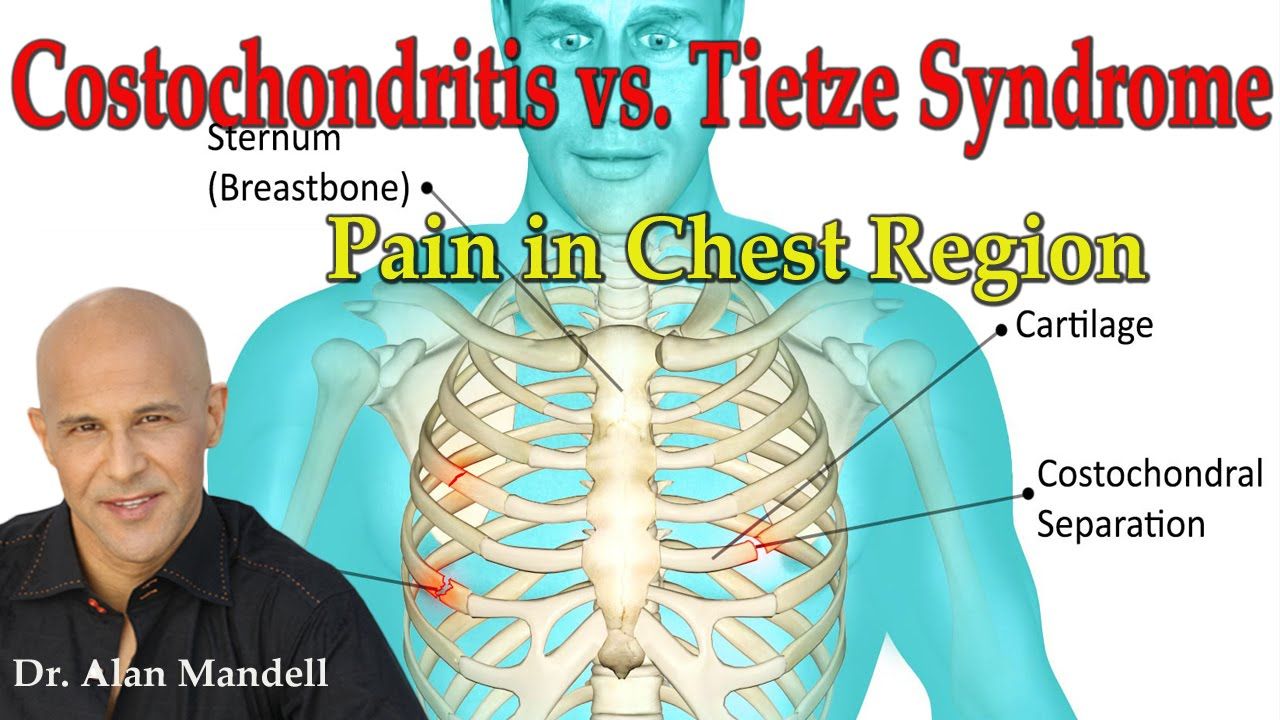Understanding Chest and Sternum Pain: Causes, Symptoms, and Treatment Options
What are the common causes of chest and sternum pain. How can you differentiate between cardiac and non-cardiac chest pain. What are the symptoms of gastroesophageal reflux disease (GERD). How is costochondritis diagnosed and treated. What exercises can help alleviate costochondritis pain.
Common Causes of Chest and Sternum Pain
Chest and sternum pain can be alarming, as it’s often associated with heart problems. However, there are various causes of such discomfort, ranging from digestive disorders to musculoskeletal issues. Understanding these causes is crucial for proper diagnosis and treatment.
Cardiac vs. Non-Cardiac Chest Pain
How can you distinguish between cardiac and non-cardiac chest pain? While it can be challenging, there are some key differences:
- Cardiac pain often feels like pressure or squeezing in the chest
- It may radiate to the arm, jaw, or back
- Cardiac pain typically worsens with exertion and improves with rest
- Non-cardiac pain can be sharp, burning, or aching
- It may be localized to a specific area of the chest
- Non-cardiac pain often changes with body position or breathing

Gastroesophageal Reflux Disease (GERD) and Chest Pain
GERD is a common cause of chest pain that can mimic heart-related discomfort. What are the primary symptoms of GERD?
- Burning sensation in the chest (heartburn)
- Regurgitation of acid or food
- Difficulty swallowing
- Chest pain, especially after meals or when lying down
- Chronic cough or hoarseness
GERD occurs when stomach acid flows back into the esophagus, causing irritation and inflammation. This can lead to a burning sensation or tightness under the breastbone, which may be mistaken for heart-related chest pain.
Esophageal Disorders and Their Impact on Chest Pain
The esophagus can be the source of various types of chest pain. What are some common esophageal disorders that cause chest discomfort?
- Esophageal spasms
- Achalasia
- Esophagitis
- Barrett’s esophagus
- Esophageal rupture (rare but serious)
Esophageal spasms, in particular, can cause severe squeezing sensations that may be mistaken for heart pain. These spasms involve irregular, uncoordinated contractions of the esophageal muscles, leading to difficulty swallowing and chest pain.
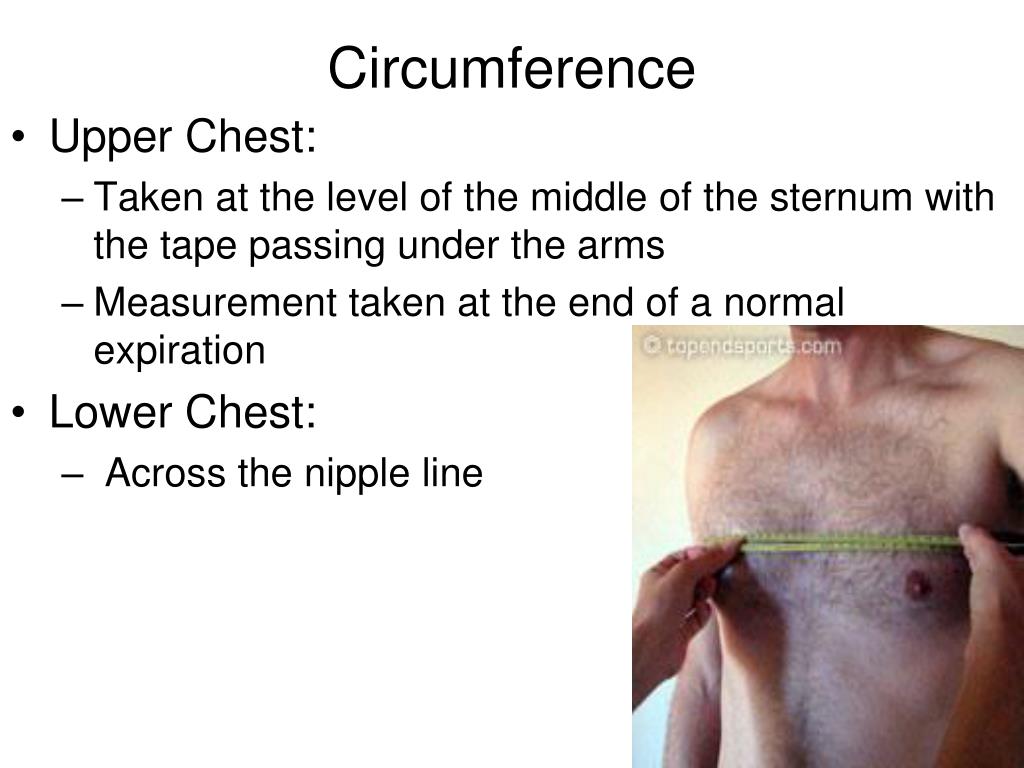
Costochondritis: A Common Cause of Chest Wall Pain
Costochondritis is an inflammation of the cartilage connecting the ribs to the breastbone. This condition can cause sharp, localized chest pain that may be mistaken for a heart attack. What are the key characteristics of costochondritis pain?
- Pain is typically sharp and localized to the chest wall
- Discomfort often worsens with movement or deep breathing
- Pain may be reproduced by pressing on the affected area
- Symptoms can last for weeks or months
- It’s more common in women and people over 40
Costochondritis is generally not serious but can be quite painful and concerning for those experiencing it.
Diagnostic Approaches for Chest and Sternum Pain
Given the potential seriousness of chest pain, how do doctors approach diagnosis? The process typically involves:
- Detailed medical history and physical examination
- Electrocardiogram (ECG) to assess heart function
- Chest X-ray to visualize the heart, lungs, and bones
- Blood tests to check for markers of heart damage or inflammation
- Stress tests to evaluate heart function during exertion
- Endoscopy or other imaging studies if esophageal disorders are suspected
It’s important to note that doctors often prioritize ruling out heart-related issues before investigating other potential causes of chest pain.
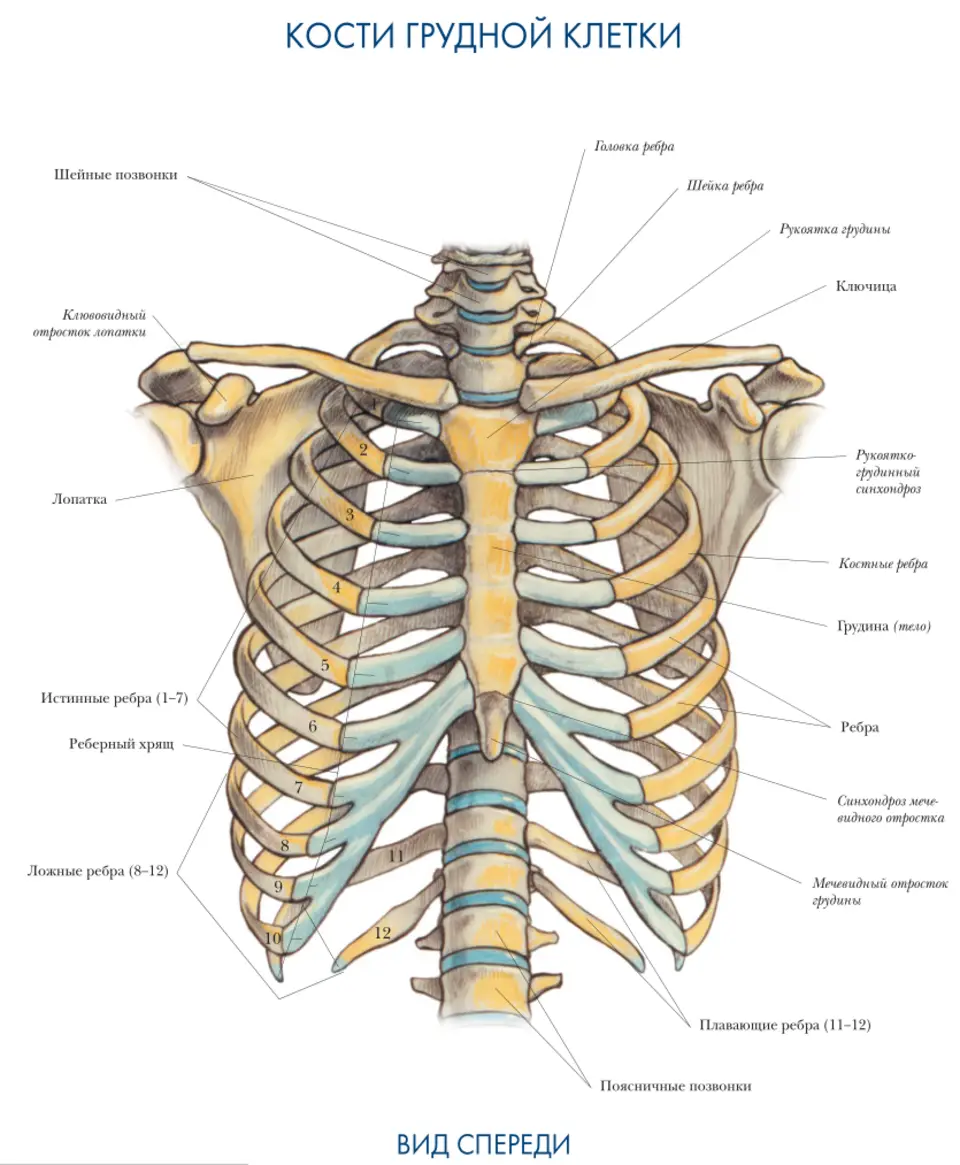
Treatment Options for Various Causes of Chest Pain
The treatment for chest and sternum pain depends on the underlying cause. What are some common treatment approaches?
- GERD: Lifestyle changes, antacids, proton pump inhibitors
- Esophageal disorders: Medications, dietary modifications, surgery in severe cases
- Costochondritis: Anti-inflammatory medications, rest, heat or cold therapy
- Cardiac issues: Medications, lifestyle changes, possible surgical interventions
For GERD-related chest pain, doctors may prescribe a trial of acid-blocking drugs to see if symptoms improve. This approach can help diagnose GERD while providing relief to the patient.
Exercises and Self-Care for Costochondritis Relief
While costochondritis often resolves on its own, certain exercises and self-care techniques can help alleviate pain. What are some effective exercises for costochondritis?
- Gentle stretching of the chest muscles
- Door stretch: Stand in a doorway with arms on either side, lean forward to stretch chest
- Foam roller exercises for the upper back
- Shoulder blade squeezes
- Diaphragmatic breathing exercises
It’s important to start these exercises gently and stop if pain increases. Additionally, applying heat or ice to the affected area, practicing good posture, and avoiding activities that exacerbate pain can all contribute to faster recovery.

When to Seek Immediate Medical Attention for Chest Pain
While many causes of chest pain are not life-threatening, it’s crucial to know when to seek immediate medical care. What are the red flags that warrant emergency attention?
- Sudden, severe chest pain
- Pain radiating to the arm, jaw, or back
- Shortness of breath or difficulty breathing
- Nausea, sweating, or lightheadedness accompanying chest pain
- Loss of consciousness
- Chest pain following trauma or a fall
When in doubt, it’s always better to err on the side of caution and seek medical evaluation for unexplained chest pain, especially if you have risk factors for heart disease.
Understanding the various causes of chest and sternum pain can help alleviate anxiety and guide appropriate care-seeking behavior. While conditions like GERD and costochondritis are common and generally not serious, it’s important to work with healthcare providers to accurately diagnose the cause of chest pain and develop an effective treatment plan. By staying informed and attentive to your body’s signals, you can better manage chest pain and maintain overall health and well-being.

Chest or Back Pain – Digestive Disorders
By
Jonathan Gotfried
, MD, Lewis Katz School of Medicine at Temple University
Reviewed/Revised Jan 2022 | Modified Sep 2022
VIEW PROFESSIONAL VERSION
Pain in the middle of the chest or upper back can result from disorders of the esophagus Overview of the Esophagus The esophagus is the hollow tube that leads from the throat (pharynx) to the stomach. Food does not just fall through the esophagus into the stomach. The walls of the esophagus propel food to… read more or from disorders of the heart or aorta ( see Chest Pain Chest Pain Chest pain is a very common complaint. Pain may be sharp or dull, although some people with a chest disorder describe their sensation as discomfort, tightness, pressure, gas, burning, or aching… read more ). Symptoms may be similar. Gastroesophageal reflux disease Gastroesophageal Reflux Disease (GERD) In gastroesophageal reflux disease, stomach contents, including acid and bile, flow backward from the stomach into the esophagus, causing inflammation in the esophagus and pain in the bottom… read more (GERD), caused by stomach acid splashing up into the esophagus, can cause a burning sensation or a tightness under the breastbone (sternum), which may resemble the pain of heart disease. Spasms of the esophagus Esophageal Spasm Esophageal spasm is a disorder of the rhythmic waves of muscular contractions (peristalsis) of the esophagus. The cause of this disorder is not known. Symptoms include chest pain and difficulty… read more and other esophageal muscle disorders can cause a severe squeezing sensation also resembling the pain of heart disease.
Symptoms may be similar. Gastroesophageal reflux disease Gastroesophageal Reflux Disease (GERD) In gastroesophageal reflux disease, stomach contents, including acid and bile, flow backward from the stomach into the esophagus, causing inflammation in the esophagus and pain in the bottom… read more (GERD), caused by stomach acid splashing up into the esophagus, can cause a burning sensation or a tightness under the breastbone (sternum), which may resemble the pain of heart disease. Spasms of the esophagus Esophageal Spasm Esophageal spasm is a disorder of the rhythmic waves of muscular contractions (peristalsis) of the esophagus. The cause of this disorder is not known. Symptoms include chest pain and difficulty… read more and other esophageal muscle disorders can cause a severe squeezing sensation also resembling the pain of heart disease.
Some symptoms are more suggestive of esophageal disorders. Severe pain that occurs suddenly after vomiting or after a procedure involving the esophagus suggests a rupture of the esophagus, although this is rare. Heartburn is a burning pain caused by GERD that rises into the chest and sometimes the neck and throat, usually after meals or when lying down. Heartburn is among the most common digestive symptoms in the United States. Difficulty swallowing Difficulty Swallowing Some people have difficulty swallowing (dysphagia). In dysphagia, foods and/or liquids do not move normally from the throat (pharynx) to the stomach. People feel as though food or liquids become… read more and discomfort that occurs only with swallowing also suggest an esophageal disorder. Chest discomfort that occurs routinely with exertion and goes away after a brief rest suggests a heart problem. However, because symptoms frequently overlap, and because heart disease is particularly dangerous, doctors often do a chest x-ray X-Rays of the Chest Anyone thought to have a heart disorder has chest x-rays taken from the front and the side. Typically, the person is standing upright, but chest x-rays can be done with people lying in bed if.
Heartburn is a burning pain caused by GERD that rises into the chest and sometimes the neck and throat, usually after meals or when lying down. Heartburn is among the most common digestive symptoms in the United States. Difficulty swallowing Difficulty Swallowing Some people have difficulty swallowing (dysphagia). In dysphagia, foods and/or liquids do not move normally from the throat (pharynx) to the stomach. People feel as though food or liquids become… read more and discomfort that occurs only with swallowing also suggest an esophageal disorder. Chest discomfort that occurs routinely with exertion and goes away after a brief rest suggests a heart problem. However, because symptoms frequently overlap, and because heart disease is particularly dangerous, doctors often do a chest x-ray X-Rays of the Chest Anyone thought to have a heart disorder has chest x-rays taken from the front and the side. Typically, the person is standing upright, but chest x-rays can be done with people lying in bed if. .. read more , an electrocardiogram Electrocardiography Electrocardiography (ECG) is a quick, simple, painless procedure in which the heart’s electrical impulses are amplified and recorded. This record, the electrocardiogram (also known as an ECG)… read more (ECG), and sometimes a cardiac stress test Stress Testing Stressing the heart (by exercise or by use of stimulant drugs to make the heart beat faster and more forcibly) can help identify coronary artery disease. In coronary artery disease, blood flow… read more before doing tests to look for esophageal disease.
.. read more , an electrocardiogram Electrocardiography Electrocardiography (ECG) is a quick, simple, painless procedure in which the heart’s electrical impulses are amplified and recorded. This record, the electrocardiogram (also known as an ECG)… read more (ECG), and sometimes a cardiac stress test Stress Testing Stressing the heart (by exercise or by use of stimulant drugs to make the heart beat faster and more forcibly) can help identify coronary artery disease. In coronary artery disease, blood flow… read more before doing tests to look for esophageal disease.
Depends on cause
Treatment of chest or back pain is usually given only when the cause is known, but people with very typical symptoms of GERD may be given a trial of acid-blocking drugs.
NOTE:
This is the Consumer Version.
DOCTORS:
VIEW PROFESSIONAL VERSION
VIEW PROFESSIONAL VERSION
Copyright © 2023 Merck & Co. , Inc., Rahway, NJ, USA and its affiliates. All rights reserved.
, Inc., Rahway, NJ, USA and its affiliates. All rights reserved.
Test your knowledge
Take a Quiz!
Top 5 Exercises for Costochondritis
Costochondritis is a condition that affects the chest wall and is pathologically not-serious, despite being reasonably common. It results from inflammation of the cartilage connecting the ribs to the breastbone (sternum). Typically, it causes a sharp, localised chest pain, typically at the costosternal joint (where the ribs attach to the breastbone).
The condition is frequently misdiagnosed as a heart attack or heart problem, because the pain can be intense and spread to the neck and shoulder. However, it is not life-threatening, and the pain subsides in a few days or weeks on average. However, caution should always be first, and if you get pain that you think may be costochondritis, you must go to see your GP to rule out any heart-related issue.
Costochondritis is commonly caused by repetitive activities such as heavy lifting, sports participation, and overstretching. There are a lot of people who also believe that stress is a key factor.
There are a lot of people who also believe that stress is a key factor.
The most common symptom of costochondritis is sharp, localised chest pain. It is sometimes worsened by deep breathing or coughing, and is sometimes felt in the back or abdomen. Other possible symptoms include chest tenderness, difficulty breathing, and fatigue.
Costochondritis is typically diagnosed through a physical examination, without the need for additional testing. However, if the chest pain is severe or persistent, the doctor may order an X-ray to rule out other potential causes.
Typically, costochondritis is treated with rest, anti-inflammatory drugs, and heat or cold therapy. It is essential to avoid painful activities and avoid lifting heavy objects. In some cases, physiotherapy may also be beneficial to reduce pain, stretch the chest, and mobilise the ribs. At Surrey Physio, we perform manual therapy and electrotherapy to help reduce the pain, and it does seem to work well.
If the pain persists or is severe, the doctor may prescribe stronger painkillers, but again it must be mentioned that if symptoms become more severe with symptoms of strong chest pains, palpitations, sweating or fever, or severe shortness of breath, you should go to A&E and seek investigation.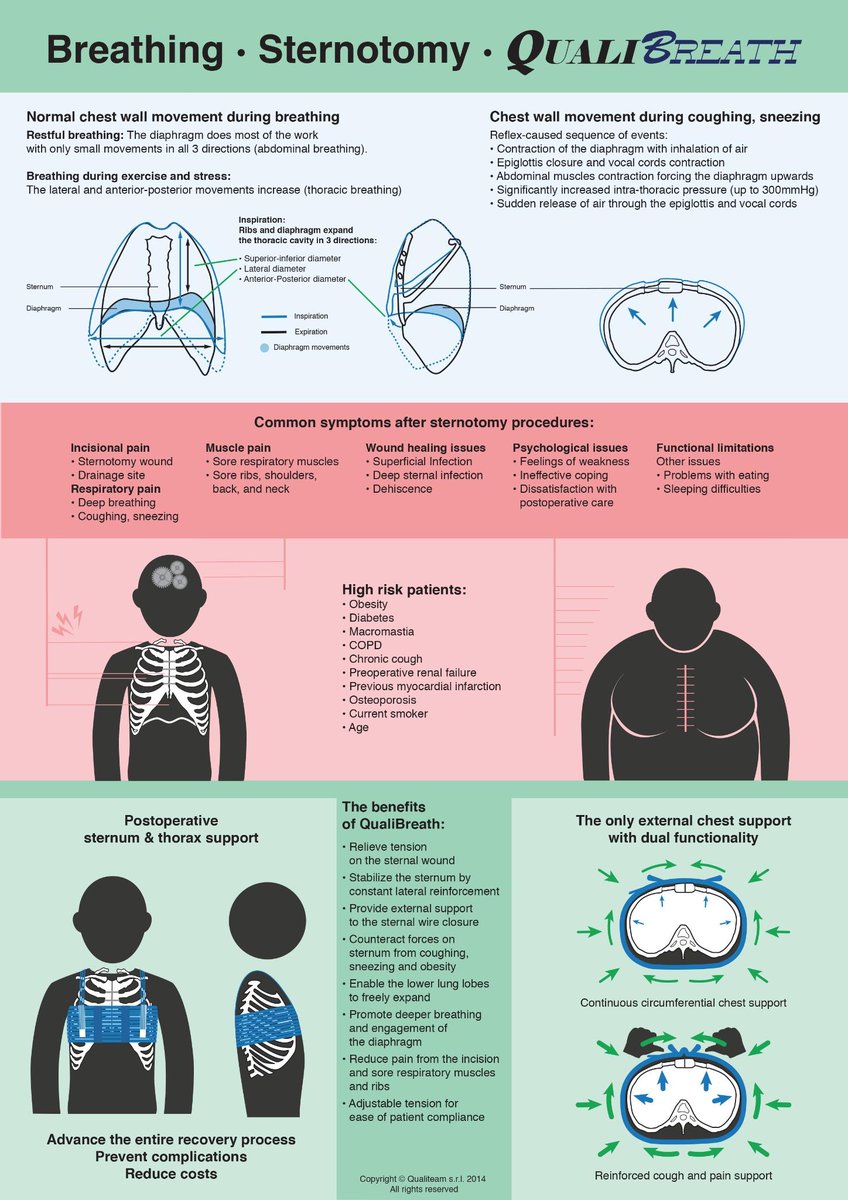
In the majority of cases, costochondritis is a temporary condition, and the pain subsides within a few days or weeks. However, if the pain is severe or persists, it is crucial to see a doctor immediately.
Let’s look at our top five exercises for costochondritis:
1. Pec Stretch: Place your arms at 90 degrees, with your palms flat on the wall, and face towards a corner. Push your body into the corner keeping your hands in the same position. You will feel a stretch across your upper arms, front shoulders and chest.
2. Straight Arm Pec Stretch: Hook your fingers around a door frame or corner of a wall, and lean forwards creating a stretch across your upper arm, front shoulder and slightly into your chest. This exercise stretches the pectoral muscle.
3. Ice the Chest: Place an ice pack or frozen peas over your chest. Wrap it in a thin towel so its not too cold. Hold it here for the required time as recommended by your therapist.
4. Diaphragmatic Deep Breathing: Place one hand on your stomach, and the other on your chest. Take a deep breath in, and push your belly (and your hand) outwards. Try and keep the movement of your chest to a minimum, so you concentrate on the deep breathing. Relax your neck and shoulders as you breathe. This will help you to use your diaphragm, the main inspiratory muscle.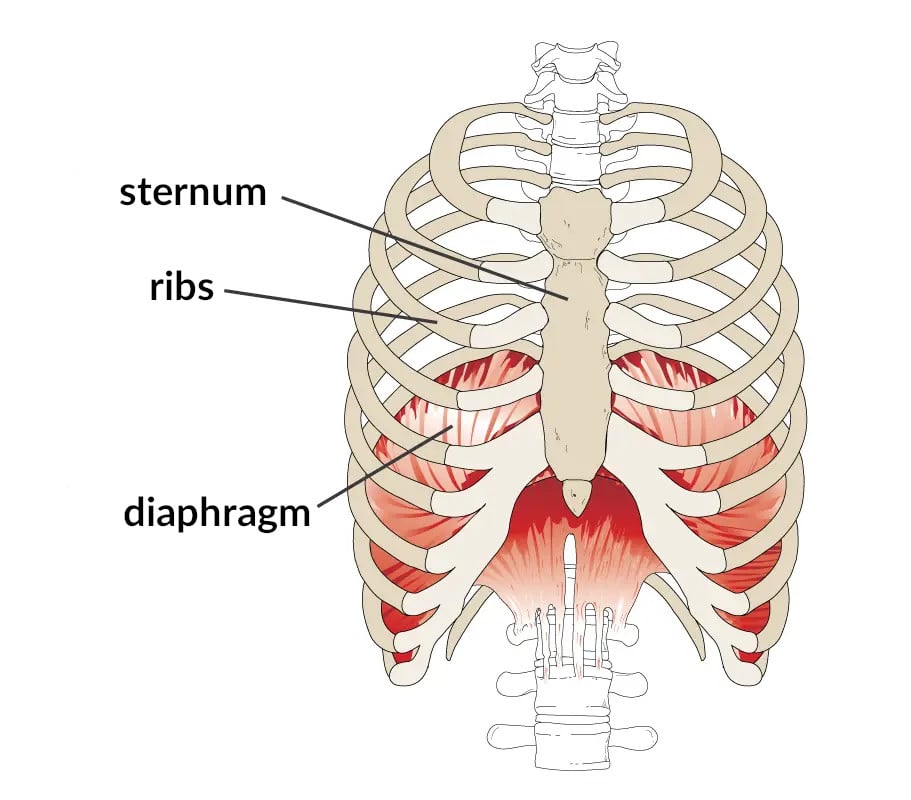
5. Mid-Scalene Sternocleidomastoid Stretch: Hook your fingers above your collar bone, and gently side-bend your neck to the opposite side. Hold the stretch. You should feel the stretch at the front/side of your neck. This exercise will help improve mobility to your neck.
If you are a therapist and like the exercises and information in this document, please go to www.rehabmypatient.com and sign up to this amazing exercise prescription software. If you are a patient and need some advice, treatment or a consultation, please go to www. surreyphysio.co.uk/bookonline. We provide virtual and face-to-face appointments with our expert team.
surreyphysio.co.uk/bookonline. We provide virtual and face-to-face appointments with our expert team.
If you want to buy any equipment seen on these articles, please go to www.rehabme.com/shop.
For more advice on carpal tunnel syndrome, check out this page: https://www.rehabmypatient.com/thoracic-spine/costochondritis
Chronic chest pain
Chronic chest pain | Center Dikul
We use cookies to improve the site and its user experience. By continuing to use the site, you consent to the use of cookies. You can always disable cookies in your browser settings.
- Home
- Articles
- Interesting org/ListItem”> Chronic chest pain
2023-06-23
Chronic chest pain
Chronic chest pain develops gradually after one or more acute periods. The disease is often associated with incorrect posture (stooped back and head tilted forward) and manifests itself in the form of pain between the shoulder blades, sometimes along with pain in the back of the head and shoulder girdle. Pain is aggravated by deep breathing and bending forward and to the side. In persons suffering from asthma or other lung diseases, the very shape of the chest predisposes to chronic chest pain.
Manifestations.
In stooped thoracic vertebrae, ribs, ligaments, muscles and nerve fibers for a long time are subjected to additional stress, and it is the cause of the disease. Professional drivers and office workers are more likely than others to experience chronic chest pain. The disease is characterized by a long development with asymptomatic periods and increasing stoop.